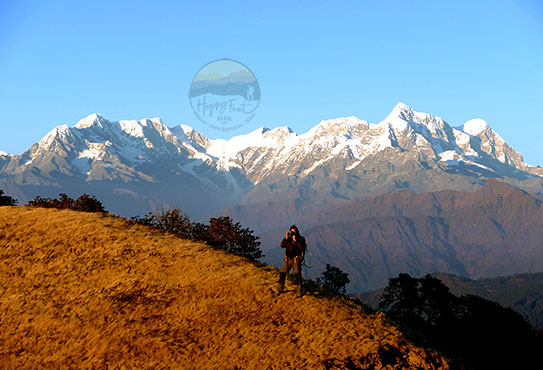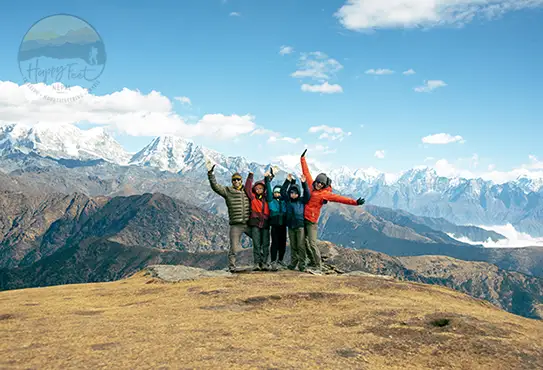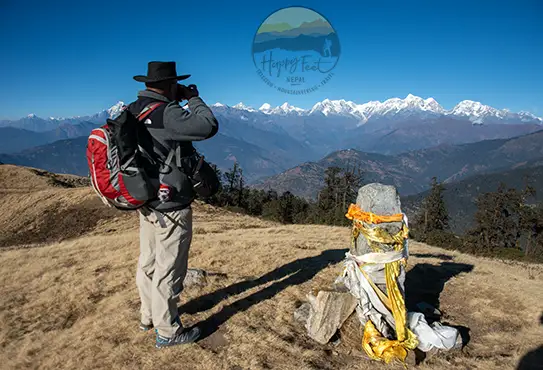-
Sunday - Friday: 9 AM - 4 PM
The Peekye region, 250 kilometres east of Kathmandu, is a short trekking destination offering grand landscape, natural abundance, and cultural encounters. The Peekye Region is newly recognised for its tourist attractions and, as a result, retains its natural and traditional characteristics. The Peekye region boasts lofty landscapes and natural beauty, making it an exceptional part of Nepal and a destination not to miss! Many first-time trekkers to Nepal prefer the fame-filled high altitude of the Khumbu area or Around Annapurn or Annapurna Base Camp. In contrast, others enjoy walking in the lower regions, where an extensive range of fauna, flora, and ethnic cultures is found, set against the backdrop of giant Himalayan peaks that stretch from far eastern Nepal to the west of Kathmandu. The Peekye region is also known as Pike, PK, Pikey, or Peekey, but its correct pronunciation is Peekye. The ancient name of this sacred mountain is Pokyep-La, which means incense growing hill, in the Sherpa dialect.
The major attractions of the Peekye region are geographical and natural beauty, traditional village life, traditional local food such as riki kur, rilduk, dal bhat, momo, thukpa and thenthuk, festive Buddhist monasteries, the dense forests of pine and juniper, the varieties of rhododendrons (blooming in March and remain on till September), illusive wildlife and the many colourful birds, including the national bird, dance, of Nepal.
The view from Peekye Peak includes Kanchenjunga to the far east and Annapurna-Dhaulagiri to the west, with a full-scale view of Mount Everest, Lhotse, Nuptse, Khatanga, Karylung, Tseringma (Gauri Shanker), Ganesh, Langtang and Manaslu. The view to the west and south takes in countless hills that stretch towards an invisible horizon. And, along the trail, sunrise and sunset views are breathtaking. The sunset-sunrise views from Peekye and from several points on the way to Peekye are simply incredible.
The Peekye Peak, with a height of 4065 metres above sea level, is a traditional pastureland of the Sherpas of the surrounding areas, especially for Naks, Yaks and Sheep. Due to its rich pastureland, there are three major cheese production centres; currently, only two centres are in function as the herders are disappearing.
Peekye Peak is a perfect trekking destination for those with limited time, trekking with family without altitude concerns, or those willing to see Everest on a full scale without the challenges of the high altitudes of the Khumbu Region and the hassles of flights to and from Lukla. Other special features of Peekye Peak include its connection by road and accessibility year-round, allowing travel without weather or seasonal barriers. However, the best times to visit Peekye are from March to May and September to January, when the weather is clear and the views are stunning.
There are various points to start and end the trek, with Peekye Peak as the culminating point of the journey. Still, there are several geographical points to supplement the beauty of this circuit. The classic trail is Jiri to Peekye and ending at Phaplu, but other options are starting Jiri and ending at Pattale Dhap or Khiji Phalate or starting from Pattale Dhap, Khiji Phalate and ending at Phaplu or Jiri. The trek to Peekye is of moderate difficulty, suitable for both experienced trekkers and those with less experience, making it accessible to amateurs.



